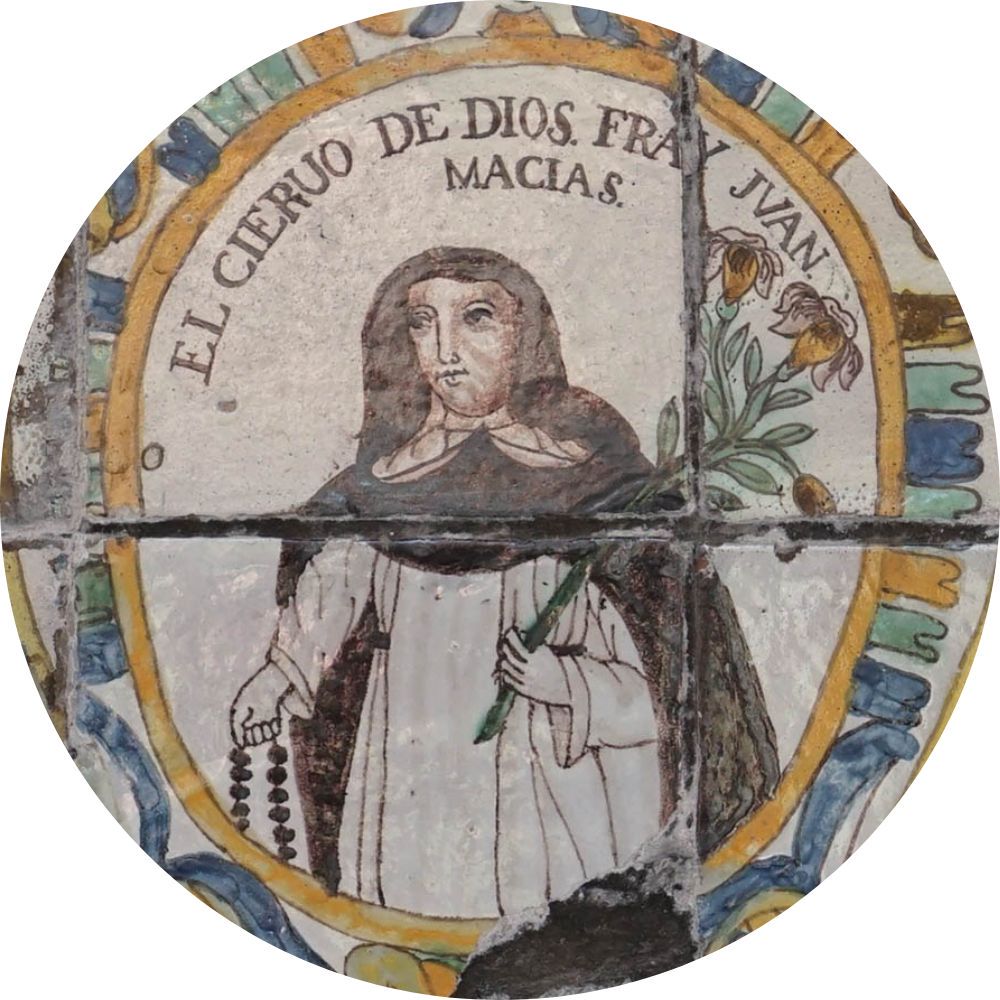St. John Macias
St. John Macias, monk
(1585-1645)
Juan de Arcas Sánchez was born on March 2, 1585, in Ribera del Fresno, Spain. He came from a poor family. His surname (nickname) "Macias" (shepherd), used today, caught on later because of the shepherding work he did as a child. For when his parents died, the boy, who was four and a half years old at the time, was placed in the care of his uncle, who directed him to herd sheep. On Christmas night of 1613, he left his uncle's house and began an independent life. In 1620, he and the merchant he had previously worked for traveled to America, first to Colombia and then to New Granada and Ecuador. He eventually settled in Peru. It was in its capital, Lima, that he entered the Order of St. Dominic in 1622 at the age of about 37. Before entering the novitiate, however, he was a farmer for a while and, as a lay brother, supported the order. Finally, on January 23, 1622, at the Santa Maria Magdalena Monastery in Lima, he began his novitiate, which he completed by taking his religious vows on January 25, 1623.
Throughout his monastic life as a convert brother, he was a porter. And although he preferred the hidden life, as he confessed to one of his fathers, he does it only out of obedience, but at the same time with joy. He undertook strict mortifications and was active in helping the poor and sick. He was also known for his fervent prayer, hence he was called "the great man of prayer." He was friends with another Dominican saint from Lima - Martin de Porres. He died on September 16, 1645, at the age of 60.
Witnesses to his life report many miracles supposedly happening through the cause of the late Br. Juan. In 1763, the Peruvian Dominicans presented to Pope Clement XIII two miracles, asking him to declare Br. Juan a "venerable." One of them took place already 33 years after his death. Br. Nicolás Ramírez, the prior of the Santo Domingo monastery, handed over a picture with the image of the deceased monk to the ailing novice, instructing him to just ask for intercession. The brothers left the sick man praying and fell asleep. When they returned, they were surprised to find that the novice was already completely healed.
Just three years after his death, efforts to elevate him to the altars began. In this way, they wanted to emphasize his altruism and assistance to the poor. Throughout this time, he enjoyed a cult following not only in Peru, but also in other Latin American countries, as evidenced by his performances. In 1681, the remains of the deceased Juan were transferred to a cedar coffin. Then it turned out that his body was not affected. It can also be viewed today.
However, his cult was not recognized by the Church until October 22, 1837. This was done by Pope Gregory XVI, who declared him Blessed. The act of canonization, on the other hand, was carried out by Pope Paul VI on September 28, 1975. Alongside St. St. Rose of Lima and Martin de Porres belongs to the group of Peru's greatest saints. His liturgical memory falls on September 18.
In iconography, St. John Macias is most often depicted simply in the Dominican habit of a conversus, that is, a white habit with a black scapular. However, he can sometimes also be seen with a donkey, which has become one of his attributes. It refers to the fundraising and charitable actions undertaken by the saint. It was on a donkey that he roamed the streets of Lima distributing food to the neediest.
Bibliography:
- De Couesnongle O.P., The social message of John Macias, [in:] A plea for Itinerant Preaching Conference, Rome 1975.
- Velasco Salvador, San Juan Macias, O.P., Guadalajara 1975.
- Canonizzazione del beato Giovanni Macias O.P. compiuta dal Santo Padre Paolo VI: Piazza S. Pietro 28 settembre 1975, Città dell Vaticano 1975.
- Gago J.L., San Juan Macías. El pastor contemplativo y emigrante, [in:] Estampas dce místocos. Juan Macías, Margarita de Hungría, Maestro Eckhart, Juan Taulero, Enrique Susón, Raimundo de Capua, Alvaro de Córdoba, Juan González Arintero, Reginaldo Garrigou-Lagrange, Mercedes de Espíritu Santo, M. Teresa Muñoz Garde, Práxedes Fernández, Caleruega 1986 (Familia Dominicana, 3), pp. 21-37.
- Kominek M. K. Święci i błogosławieni Zakonu Kaznodziejskiego, Warszawa 2001, pp. 143-145.
- Benito Rodríguez J. A., San Juan Macías. El santo de los pobres, [in:] Cinco Santos del Perú. Vida, obra y tiempo, ed. J.S. Jordán, Lima 2016, pp. 116-136.

